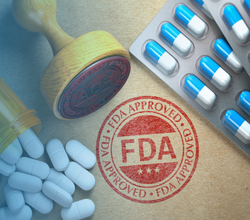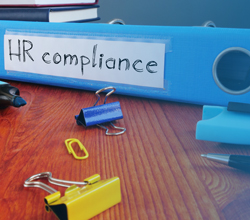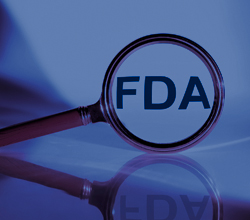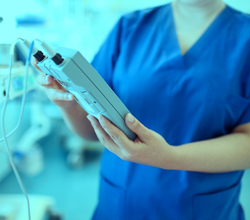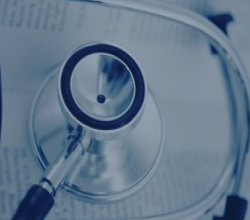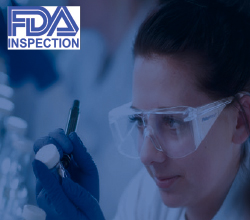
Best Practices for an Effective Cleaning Validation Program
 Joy McElroy
Joy McElroy
 60 Min
60 Min
Product Id: 704329
This training program will be beneficial to personnel directly involved in the development of cleaning procedures, cleaning validation programs and plans. Additionally, those responsible for cleaning validation protocols and execution activities, including validation and laboratory personnel, as well as, beginning or seasoned operational personnel who will eventually participate in such efforts, will find this course particularly useful.

Good Documentation Guideline (Chapter <1029> USP)
 Dr. Afsaneh Motamed Khorasani
Dr. Afsaneh Motamed Khorasani
 60 Min
60 Min
Product Id: 705130
This webinar will familiarize participants with USP Chapter <1029> on good documentation guidelines. This session will wrap up the general concept and will provide information as to what needs to be documented in certain records.

Steam Sterilization Microbiology and Autoclave Performance Qualification
 Danielle DeLucy
Danielle DeLucy
 60 Min
60 Min
Product Id: 705027
In this webinar, the steam sterilization mechanism will be described as it relates to bacterial cells and endospores. The process and key terminology are defined. Understanding these fundamentals is critical to develop a successful autoclave sterilization process.

Complaint Handling Requirements (US); Interrelationship with CAPA, Change Control, Adverse Event Reporting, Recalls and Life Cycle Process Activities
 Vanessa Lopez
Vanessa Lopez
 90 Min
90 Min
Product Id: 704758
This training program will provide the regulatory requirements (US) for complaint handling in the medical device and pharmaceutical industries. The course will touch on complaint sources, and details will be furnished on the interrelationships regarding complaint handling/change control/adverse event reporting/and recalls. The course will also include timeline requirements associated to adverse event reporting, which reporting formats to use, when to recall and types of recalls.

Validation of HPLC/UPLC Methodologies
 John Fetzer
John Fetzer
 60 Min
60 Min
Product Id: 705291
This training program will cover in detail the key elements of HPLC and UPLC method validation to ensure compliance with FDA GLP and ISO 17025 requirements.

Sterilization of Pharmaceutical Products and Medical Devices
 Carl Patterson
Carl Patterson
 90 Min
90 Min
Product Id: 705310
This webinar will discuss in detail the methods of sterilization to be used on medical devices and pharmaceutical products including advantages and disadvantages of each method. Also attendees will understand the regulations pertaining to sterilization of products that will help to decide with method to use for their product. Validation of each sterilization method will be discussed and how best to prove to a regulatory body the products being treated are considered sterile.

Making Data Driven Decisions using Statistical Hypothesis Testing
 Steven Wachs
Steven Wachs
 60 Min
60 Min
Product Id: 704211
This training program will cover statistical hypothesis testing concepts including: null and alternate hypotheses, test statistics, p-values, confidence intervals, confidence levels, power, power curves, and sample sizes. Several types of hypothesis tests will be covered such as 1 and 2-sample means tests, tests of variances, and tests of proportions. Equivalence tests will also be discussed. The importance of selecting appropriate sample sizes will be stressed.

Objectionable Microorganisms in Biopharmaceutical Manufacturing
 Carl Patterson
Carl Patterson
 60 Min
60 Min
Product Id: 705319
This webinar will discuss the regulations pertaining to objectionable microorganisms, agency expectations, methods to identify objectionable microorganisms, interpreting results, and controls to put into place.

Understanding and Implementing a Quality by Design (QbD) Program
 Steven Laurenz
Steven Laurenz
 60 Min
60 Min
Product Id: 705001
This webinar will help you understand Quality by Design (QbD) principles used in pharmaceutical product manufacturing, outline the key steps to implement a QbD program and discuss the tools used to implement a QbD approach.

4-Hr Virtual Training: How to Respond to an FDA Investigation
 Joy McElroy
Joy McElroy
 4 hrs
4 hrs
Product Id: 704549
This FDA investigation training program will deconstruct best practices for handling unannounced FDA visits, responding to a 483 or a warning letter, and the effect of an FDA investigation. The program will also discuss basic concepts that should be employed by everyone regulated by the FDA and define processes for preparing for FDA audits.

Automating Assays for Clinical Diagnostics
 Todd Graham
Todd Graham
 60 Min
60 Min
Product Id: 703268
This webinar on automating laboratory assays will teach you how to translate an assay that is performed manually to one that is fully automated, with high quality and with proper validation and quality assurance for regulatory purposes.

OTC Drug Regulations
 Loren Gelber
Loren Gelber
 60 Min
60 Min
Product Id: 705446
This webinar will provide attendees with the knowledge and skills needed to develop and produce an OTC drug product for marketing and sale in the U.S.

Understanding Aseptic Technique and Cleanroom Behavior
 Danielle DeLucy
Danielle DeLucy
 60 Min
60 Min
Product Id: 704429
This training program will discuss how, in sterile compounding, aseptic technique is contributing to the prevention of microbiological contamination. It provides sterility, safety, and efficacy to the sterile product, especially various injections for patients. In this course, cleaning, gowning and proper methods of contamination control will be reviewed along with why clean rooms are designed the way they are.

Scale-Up, Cycle Transfer, and Maximum Throughput Capability for Lyophilized Products
 J. Jeff Schwegman
J. Jeff Schwegman
 90 Min
90 Min
Product Id: 702893
This training on lyophilization cycles will cover the process of transferring and or scaling-up a lyophilization process to a larger or different freeze-dryer. It will discuss a methodical approach to understand the thermal properties of a product and simplify the scale-up or transfer process resulting in a consistent product being produced in any freeze-dryer.

U.S. Adverse Event Reporting Regulations for Drugs, Dietary Supplements and Cosmetics
 Norma Skolnik
Norma Skolnik
 60 Min
60 Min
Product Id: 704371
In order to market dietary supplements and OTC drugs in the U.S., reporting serious adverse events is required. It’s essential to understand these important FDA requirements to assure regulatory compliance and avoid an FDA warning letter or 483 audit issues.

New and Expected Guidance’s on Data Standards and Electronic Submissions for Drugs and Medical Products
 Angela Bazigos
Angela Bazigos
 90 Min
90 Min
Product Id: 704529
This training program will examine the approval process for drugs, biologics and devices and elaborate FDA submission requirements and guidances. It will also discuss electronic regulatory submission and gateway for FDA and FDA eCTD guidance and specifications.

QbD Approach to Analytical Method Lifecycle: Design, Development, Validation and Transfer
 Gregory Martin
Gregory Martin
 90 Min
90 Min
Product Id: 703644
This training on using the QbD approach to analytical method lifecycle is designed to provide participants with a lifecycle approach to developing and validating analytical methods and comply with compendial requirements. The webinar presenter will use case studies to illustrate each stage in the process.

Risk Based Monitoring for GCP Compliance
 Laura Brown
Laura Brown
 60 Min
60 Min
Product Id: 705052
This Webinar will help you how to ensure that your data and supporting documentation are in the appropriate format to comply with regulatory authority inspection. Risk based monitoring can contribute to better oversight and more efficient use of resources of clinical studies.

FDA Regulations for Environmental Monitoring (EM) Program
 Joy McElroy
Joy McElroy
 90 Min
90 Min
Product Id: 704377
This training program on applicable regulations pertaining to clean room environmental monitoring (EM) programs will discuss the basics of setting a robust and effective EM program. The course will also detail the relationship between an EM Excursion Program and CAPA and the four phases of clean room transitional monitoring.

Pharmacokinetics/Biopharmaceutics for Chemists/Analysts
 Saeed Qureshi
Saeed Qureshi
 120 Min
120 Min
Product Id: 705271
This training program will focus on defining and explaining numerous concepts and terminologies in a simple language as related to the safety, efficacy and quality assessment of pharmaceutical products for human use. It will also describe the necessity of understanding the basic physiological concepts pertinent to drug actions, product developments and evaluations.

